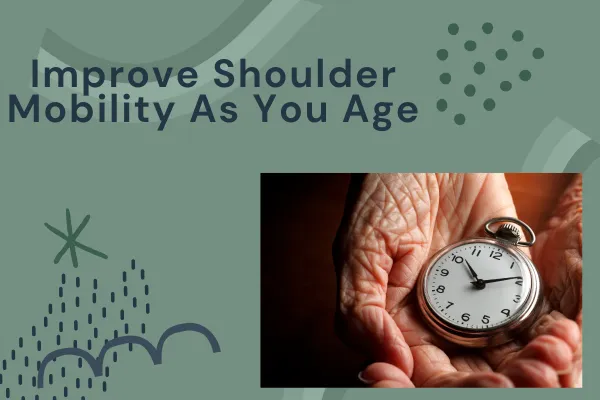
Shoulder Mobility As You Age
Unlocking Shoulder Mobility as You Age: Tips for Maintaining Flexibility and Reducing Pain
As we age, many of us notice that our shoulders start to lose their range of motion. Daily tasks like combing, brushing, or washing our hair, getting dressed, or even fastening a seat belt can become more challenging. So why do we experience this loss of mobility, and how can we address it?
Understanding the Decline in Shoulder Mobility
The most obvious reason for decreased shoulder mobility is that we stop using the full range of motion in our shoulders due to less active lifestyles. As we age, if we're not stretching or exercising regularly, our muscles and joints can become stiffer and tighter. This leads to a decrease in mobility.
Remember the saying, "Move it or lose it"? With age, this becomes increasingly applicable.
Other Contributing Factors
Joint Issues: Conditions like joint irritations or misalignments, whether in the spine or the shoulder girdle, can also restrict movement and flexibility. It's crucial to maintain proper joint function to avoid stiffness and tightness.
Posture: Poor posture significantly affects shoulder mobility. Try this simple test: slouch while lifting your arm above your head, then sit up straight and try again. You’ll likely notice an improvement when your posture is corrected. Therefore, improving your posture can greatly enhance your shoulder mobility.
Muscle Imbalance: Many people develop a weakness in the back of their shoulders, while the front remains overly dominant. This imbalance is often due to typical exercises and daily activities that focus on the front. It’s essential to strengthen back muscles to correct this imbalance.
Diagnosing Shoulder Problems
To properly address shoulder mobility issues, a comprehensive diagnosis is crucial. This typically involves taking a detailed patient history, including past trauma, health issues, and medications. A physical and neurological exam follows, assessing different ranges of motion and testing for potential problems. In some cases, advanced imaging techniques such as X-rays, ultrasounds, or MRIs may be necessary to investigate further, especially if tears or serious conditions are suspected. ## Treatment Strategies Several treatment strategies can improve shoulder mobility, including:
Soft Tissue Therapies: These techniques help alleviate muscle tension and restore elasticity.
Joint Mobilization and Manipulation: Adjustments can restore normal joint function and relieve nerve pressure.
Active Release and Soft Tissue Therapy: These methods focus on reducing pain and improving mobility.
Shockwave Therapy, IMS, or Acupuncture: These are additional techniques that may be used to enhance shoulder function. Additionally, personalized rehabilitation exercises and stretches will be recommended for you to do at home, aimed at speeding your recovery and enhancing mobility.
Lifestyle and Prevention Advice
Lastly, lifestyle changes can significantly impact shoulder health. For instance, avoiding slouched sitting positions can accelerate improvement and alleviate ongoing shoulder issues. If you're experiencing shoulder pain or mobility issues, consider seeking professional advice.
Feel free to book an appointment with us to help you regain your shoulder mobility and function. We're here to ensure you can perform all your daily activities comfortably and pain-free.
Looking forward to seeing you soon and helping you feel as good as new!

